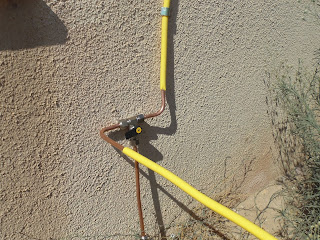The ultimate goal of every farmer is to produce as much as
possible to meet his subsistence and commercial needs. Today, like never
before, there is increasingly diminishing land resources that are supposed to
support agriculture. Such resources include forest cover, clean water, clean energy, healthy soils, and a balance
ecosystem.
Because agriculture has ceased being only a source of food and
turned into becoming an important source of livelihood, farmers have to make do
with the existing challenges and keep farming. This has pushed agricultural
innovation a notch higher, and brought to the fore the aspect of integrated small-scale
farming, and urban farming. Besides, the long forgotten and underdeveloped
farming ventures have been brought to the fore attracting numerous research,
infrastructure development and trainings targeting farmers across the board.
Such ventures include bee
keeping.
Beekeeping is an important means of livelihoods diversification
and efficient use of the scarce land resources at our disposal. It has been
proven that the only way to secure a people’s livelihood is to diversify it.
Bee keeping remains largely underdeveloped in Kenya with most farmers engaging
in traditional methods of hive making, honey harvesting and bee management that
is 70 per cent less efficient compared to the modern methods. The traditional
round hives for example yield an average of 6 kilograms per year compared to 20
kilograms per year for the Kenya Top Bar Hive (KTBH) and the Langstroth hives
(uses frames). Other different types of hives used in Kenya in beekeeping
include: Pot hives (clay pots), log hives, and basket hives.

There are many benefits associated with bee keeping
in terms of enhancing pollination, which enhance crop yields. Bee keeping has
almost always been friendly to the environment unless where traditional harvesting
method using fire is used for ground bees and those staying in tree trucks.
Small fires left behind by honey harvesters have ended up destroying forests in
most cases. Beekeepers are known to engage in tree planting and large-scale
tree nursery projects that have ended up replenishing the ever-shrinking forest
cover in Kenya.
Like every other agricultural venture, meaningful
bee keeping requires excellent management of hives and the bees. Bee keeping is
one of the farming activities that require very little time, equipment and
land and hence one of the most ideal activities for small-scale farmers in
Kenya. There is however a major hindrance in the development of sustainable
bee farming in Kenya which is partly blamed on the policy makers, the
government and private sector and partly on the farmers themselves.
Notable of all is the forest destruction which is surely
reducing the potential of developing the Kenyan bee industry. Similarly
important is the lack of or very little bee keeping research meant to develop
new breeds and management techniques to be passed on to farmers.
Farmers suffer
from lack of up-to date information of bee keeping, honey harvesting and
processing and market intelligence (especially international market). Kenya’s
honey market remains largely underdeveloped regarding the volumes and quality
produced to warrant European Union market in spite of the license to export
honey to the European Union issued to Kenya in 2003. The local market too is
too large to be met by the merger honey produced locally. Most honey sold in
Kenya is imported from Tanzania and repackaged as Kenyan honey.
Establishing a beekeeping
Enterprise, Costs and Profit
Most
farmers in Kenya produce an average of
20 kilograms per beehive (in this case, KTBH). With proper management and
swarming control, harvests up to 30 kilograms per hive have been realized.
Maximum production can be enhanced further by encouraging 100 percent beehive
occupation, with some effort on the part of the farmer.
Farmers
can opt to incur less packing costs by using plastic jars and bottles
especially when targeting local market that is less strict on packaging
standards. However, this does not refer to hygienic and food safety standards.
In the arid and semi-arid remote areas of Kenya where honey production per hive
and the hive population per farmer are high, there is the challenge of honey
processing and access to urban market where prices are good and demand high.
This is where intermediaries (middlemen) thrive and farmers are exploited.
Farmers need to come together and form cooperative
societies to increase their market penetration and bargaining power.
A farmer with 10 KTBH hives is able to produce
160 kilograms of honey at 80 percent occupation rate and 20 kilograms per hive
production rate. The farmer is able to sell the honey in a semi-refined form at
KES 500 per kilogram, being an average case scenario.
Table
5: Costs of starting a 20 KTBH beekeeping business.
Expenditure
(KES)
Cost
of purchasing 10 Kenya top bar hives @ 2,000 each = 20,000
Cost
of buying a bee suit @ 2,570 = 2,570
Cost
of buying a smoker @ 700 = 700
Cost
of hanging posts (13) @ 150/post = 1,950
Cost
of maintenance and other miscellaneous = 500
Total Expenses = 25,720
Revenue
(KES)
Estimated Revenue from 8 occupied hives = KES 32,000
Income
(KES)
Income
in year one = 32,000 – 25, 720 = 6,280 A Profit of KES 6,280 is realized.
Notes
• Estimated
honey production from one Bee Hive = 20 Kilograms
• Total
honey production from 8 occupied hives = 160 Kilograms
• Estimated
local price of one Kilogram of semi refined honey = KES 200 / Kilogram
• Estimated Revenue from 8 occupied hives = KES 32,000
The minimum number of hives a farmer can keep for commercial honey
production is 20.
Honey refinement and processing for
value addition will attract the urban lucrative high-end market. Small-scale
farmers can form corporative societies or bee farmers’ groups to offset the
costs of honey processing and transportation.
·
Insights on Apiary management
·
Bee Hive construction
·
Conditions for maximum honey
production
·
Swarm prevention and control
·
Bee feeding
·
Bee Pests and diseases and how to
control
·
Honey
Harvesting
·
The
Market for Bee Products







